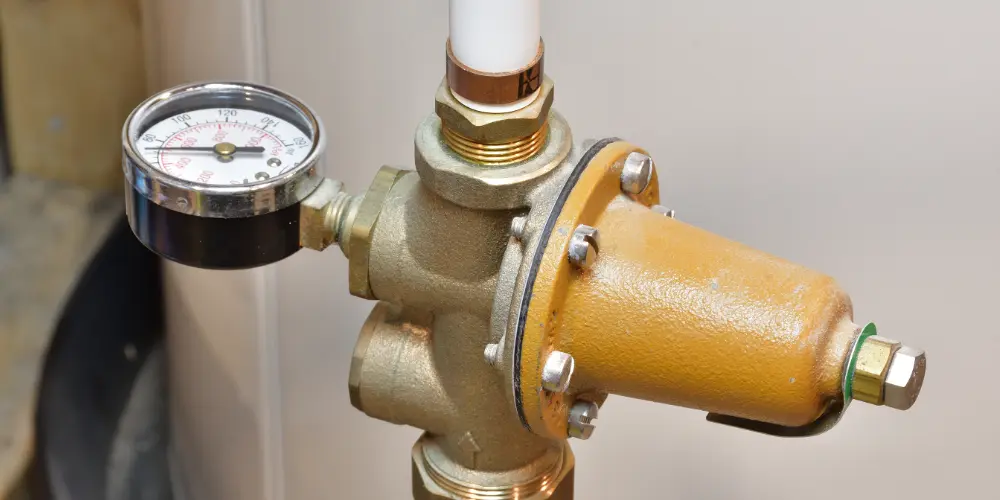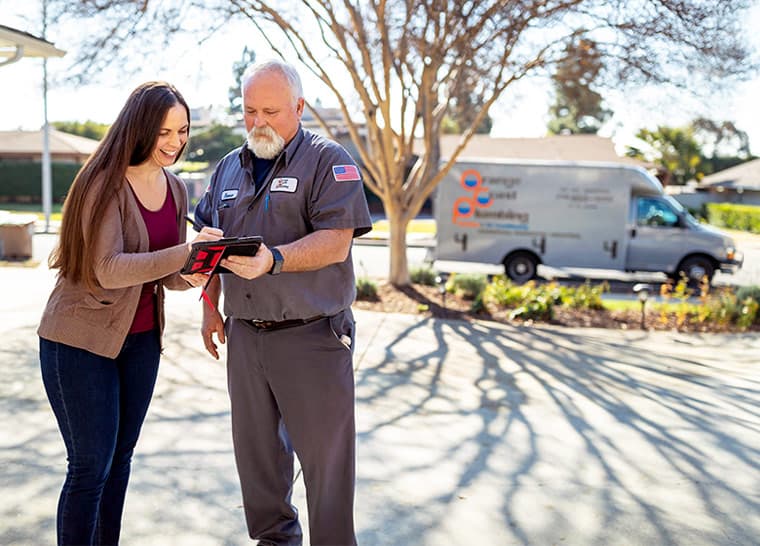Some people thrive under pressure; others wilt.
Plumbing systems need a certain amount of water pressure to function, but too much can damage pipes, fixtures, and appliances. That’s where a water pressure regulator comes in.
A water pressure regulator is a device that controls the amount of water pressure entering your home at a given interval. It’s usually installed near the main water supply valve.
Why Is a Water Pressure Regulator So Important?
High water pressure is like high blood pressure for plumbing. A water pressure regulator prevents a “stroke.” It acts as “medication” to:
- Protect Plumbing: High water pressure can weaken pipes and fittings and damage appliances.
- Save Water: Maintaining optimal pressure reduces water waste.
- Enhance Comfort: Stable water pressure ensures steady water flow in showers, faucets, and other fixtures.
- Extend Appliance Lifespan: Dishwashers and washing machines last longer with controlled water pressure.
Signs of Failing Regulator
Most water pressure regulators last between 10 and 15 years. However, some may fail earlier due to sediment buildup or frequent use. Watch for these signs that your regulator is near the end of its life:
- Sudden changes in water pressure.
- Hammering or whistling noises in your pipes.
- Constantly leaking pressure relief valve on the regulator.
- Visible damage or wear on the regulator.
If you notice any of these signs, DO NOT postpone the repair. Replace your water pressure regulator as soon as possible to prevent further damage to your plumbing system.
How to Replace Your Water Pressure Regulator
1: Gather Your Tools & Supplies
- New water pressure regulator
- Pressure gauge
- Pipe wrench
- Adjustable wrench
- Teflon tape
- Bucket
- Safety gloves and goggles
2: Turn Off the Water Supply
- Locate the main water shut-off valve, usually near the water meter.
- Turn the valve clockwise to shut off the water supply to your home.
3: Relieve Water Pressure
- Open a faucet at the lowest point in your home to drain any remaining water in the pipes.
4: Remove the Old Regulator
- Use a pipe wrench to loosen the fittings on both sides of the old regulator.
- Be prepared with a bucket to catch any water that may spill out.
5: Install the New Regulator
- Apply Teflon tape to the threads of the new regulator to ensure a tight seal.
- Position the new regulator and tighten the fittings.
6: Turn On the Water Supply
- Slowly turn on the main water valve to restore water flow.
- Check for leaks around the new regulator and tighten if necessary.
7: Adjust the Pressure
- Most regulators come preset, but you can adjust the screw on top of the regulator to decrease or increase pressure.
- Use a gauge to measure and set the desired pressure, typically between 45-60 psi.
FAQs: Replacing a Water Pressure Regulator
Q: How do I know if my water pressure regulator needs replacement?
Signs include fluctuating water pressure, strange pipe noises, and noticeable leaks around the regulator.
Q: Can I replace a water pressure regulator myself?
Replacing a regulator is a simple DIY task if you have basic plumbing skills and the right tools.
Q: How much does it cost to replace a water pressure regulator?
The cost varies wildly, from $30 to $300+, depending on the model. Professional installation can add another $150 to $300.
Q: What are the risks of not replacing a faulty water pressure regulator?
Ignoring a faulty regulator can damage pipes and increase your water bills.
Q: How long does it take to replace a water pressure regulator?
Replacing a water pressure regulator takes 1 to 2 hours, depending on your plumbing experience and the complexity of the installation.
Q: What should I do with the old water pressure regulator?
The disposal of the old regulator will depend on your local regulations. It can usually go in your regular waste or recycling, but check with your local waste management facility for disposal guidelines.
Q: Will my water pressure regulator affect my hot water supply?
A malfunctioning regulator can affect hot and cold water supplies alike. Proper water pressure helps maintain consistent flow in all plumbing fixtures, including hot water systems.
Q: Do all homes need a water pressure regulator?
No. However, if you live in an area with high main water pressure or have experienced plumbing issues, we advise installing one for protection.
Q: What type of water pressure regulator should I buy?
Look for a device that fits your pipe size and can accommodate your water pressure requirements (usually between 25 and 75 psi).
Q: Can a faulty regulator cause low water pressure?
Absolutely. A malfunctioning regulator may restrict water flow, decreasing water pressure throughout your home.


